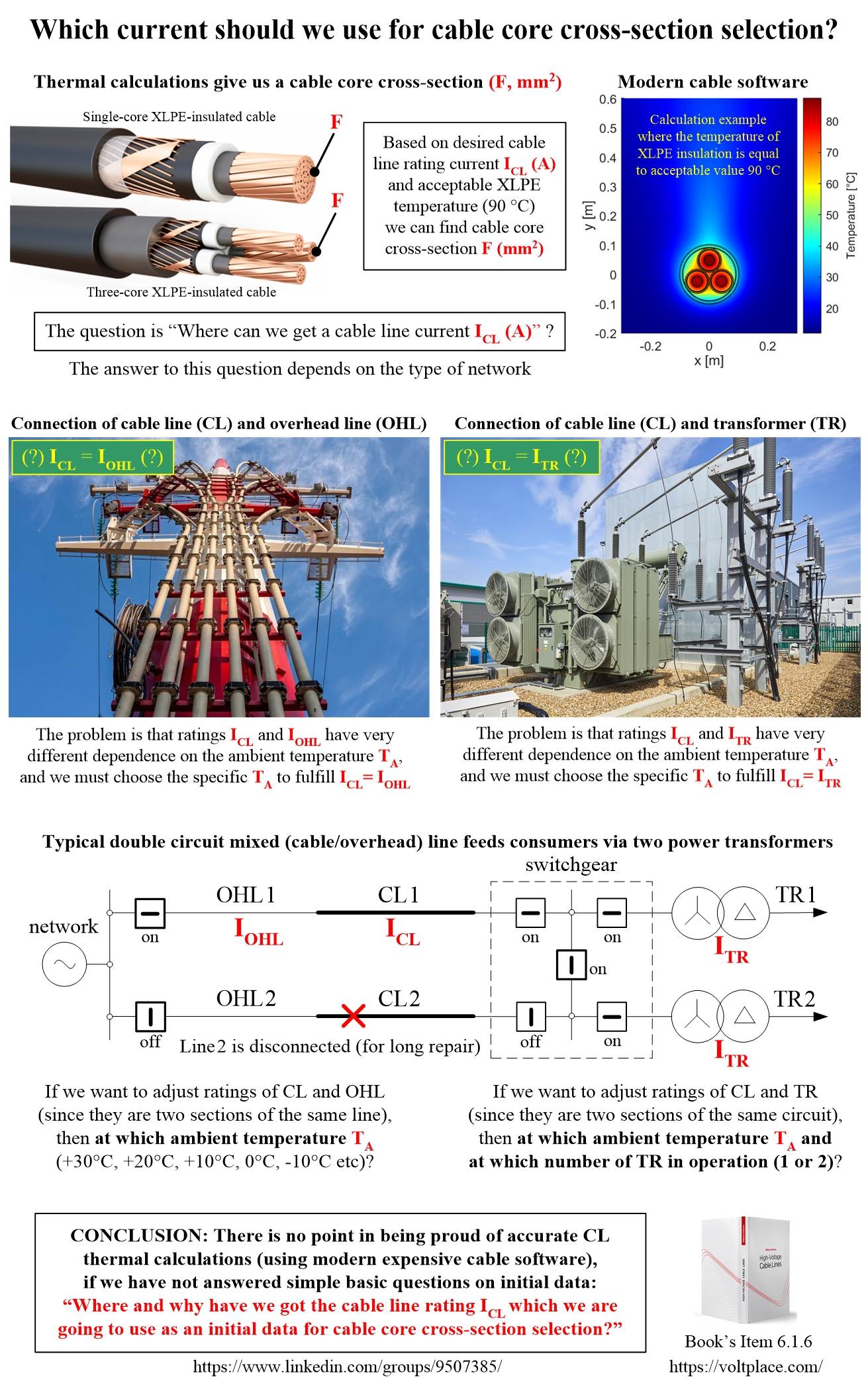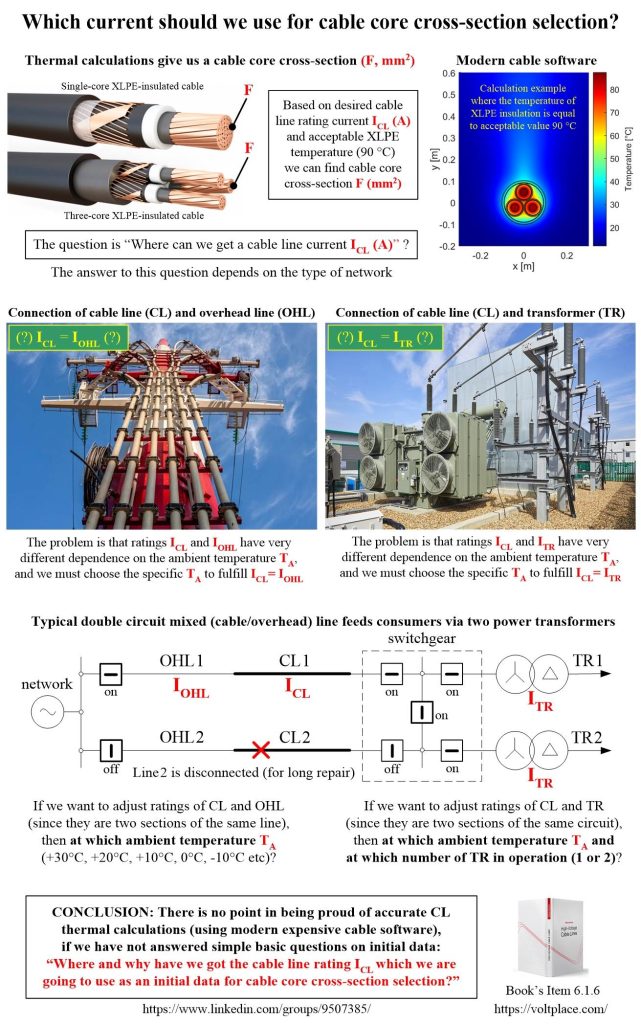
Which current to use for cable core selection?
When designing 6-500 kV cable lines, one of the important tasks is to carry out thermal calculations and select the cable core cross-section (taking into account all influencing factors). The customer gives us the current that the cable line should pass, and we tell him which combination of cable core cross-section and screen bonding type is optimal.
We put a lot of attention to the accuracy of thermal calculations. To do this, engineers developed numerous convenient software that we buy, sometimes pay a lot of money. Using such software, can we be sure that we have chosen the right cross-section of the core, and that the cable line will work without problems? No, we can’t.
The reason hides not in the software, but in the source data that we are given for calculations. It turns out that the currents that the cable line should pass (and which we use to select the cable core cross-section), as a rule, do not inspire any confidence.

There are many cases where we need to think carefully about the current in the cable line that we should use for the core selection. Let us start with two simple examples shown in the photo.
1️⃣ A cable insert appears on the overhead line. We must coordinate the core cross-section of such a cable line with the rating current of the overhead line. But what kind of overhead line current should we take, if it significantly depends on the air temperature?
2️⃣ The cable line feeds the transformer substation. We must coordinate the core cross-section of such a cable line with the rated power of the transformer. But the transformer’s rated power, as a rule, is chosen taking into account its ability to overload, and then what current should the cable line be selected for?
Even if we can justify a specific electric current value for selecting a cable line core, then another question will arise – the unevenness of the load graph. The current we have found is the maximum current of the load graph, which is no more than 30-60 minutes per day, and therefore the resulting cable core cross-section will be clearly overestimated. The situation can be corrected if we know the exact load graph (and take it into account when making thermal calcultations of the cable line), but it is almost impossible to find credible information about the load daily behavior.
Without understanding which current and why we should use as input data, it makes no sense to use “accurate tools for thermal calculation and cable core cross-section selection”.
Do not hesitate to ask yourself and others the simple question “Where does this current come from?”, as well as “Which are the conditions (ambient temperatures and network modes) of this current?”
Unfortunately, without answers to these questions, you will not be able to correctly set the initial data (for example, temperatures of the ambient air and soil) for thermal calculation, and even the best software will give you the wrong cable core cross-section.
Please read Item 6.1.6 of the book
